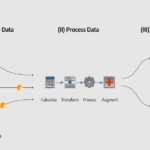In today’s fast-paced digital landscape, delivering compelling and personalized content to customers across multiple channels is a critical part of any marketing strategy. As consumers increasingly engage with brands through a wide variety of touchpoints—from websites and apps to social media and smart devices—marketers are tasked with managing content delivery across these channels seamlessly. This is where headless CMS architecture comes into play.
Headless CMS, a modern alternative to traditional content management systems, allows businesses to decouple content creation from the presentation layer. This flexible and scalable approach provides a significant edge to marketers who need to engage audiences across diverse platforms quickly and consistently. In this article, we will explore how headless CMS architecture empowers marketing strategies and elevates your ability to deliver impactful, omnichannel content.
What is a Headless CMS?
A headless CMS is a content management system that stores and organizes content separately from the front-end presentation layer. Traditional CMSs, like WordPress or Drupal, combine both content creation and delivery within a single system, meaning the content and its presentation are tightly linked. Headless CMS, on the other hand, only focuses on managing content while using APIs to deliver that content to various front-end interfaces such as websites, mobile apps, and other digital platforms.
In a headless CMS architecture:
- Backend (content repository) is where content is created and stored.
- Frontend (presentation layer) is developed independently and pulls content from the backend via API calls.
This separation provides a higher degree of flexibility, control, and scalability, making headless CMS an ideal solution for today’s content-rich marketing environments.
How Headless CMS Enhances Your Marketing Strategy
1. Omnichannel Content Delivery
In the digital age, customers interact with brands on multiple platforms and devices, including websites, mobile apps, social media, IoT devices, and even voice assistants. With a traditional CMS, marketers often face challenges when trying to deliver content uniformly across these channels due to system limitations or technical constraints. Headless CMS architecture eliminates this issue by allowing content to be distributed via APIs to any platform or device.
- Benefit: You can maintain consistent messaging and branding across all channels, providing a cohesive customer experience regardless of where the audience engages with your content.
2. Faster Time to Market
Marketing campaigns often have tight deadlines, requiring content to be created, adjusted, and published rapidly across multiple platforms. A headless CMS speeds up content deployment by allowing the same content to be reused and repurposed across various channels without needing to recreate or reformat it each time.
- Benefit: Faster content creation and deployment cycles enable you to respond quickly to market changes, product launches, or trending topics, giving you a competitive edge.
3. Personalization at Scale
A critical part of any successful marketing strategy is delivering personalized content that resonates with individual users. Headless CMS architecture allows marketers to leverage customer data to create personalized experiences across all digital channels. Since content is stored separately from its presentation, it can be dynamically tailored to meet the preferences, behavior, and demographics of different audience segments.
- Benefit: Personalizing content at scale increases engagement and conversion rates, as customers are more likely to interact with content that feels relevant to their needs.
4. Enhanced Flexibility and Customization
One of the most significant advantages of a headless CMS is the flexibility it offers developers and marketers. With no rigid front-end framework, marketing teams can experiment with different designs, templates, and layouts for various platforms without being restricted by the CMS’s predefined structure. This is particularly useful when businesses need to deliver content to non-traditional devices like smartwatches or AR/VR platforms.
- Benefit: Marketing teams can quickly adapt and innovate their content delivery methods, taking advantage of new platforms and technologies as they emerge.
5. Improved SEO and Content Performance
SEO remains a cornerstone of digital marketing strategies. With a headless CMS, content is not tied to a specific format or platform, allowing developers to optimize content for SEO across all devices and channels. Moreover, marketers have more control over page performance because the decoupled nature of the CMS allows them to streamline front-end code and prioritize speed.
- Benefit: Better SEO practices result in higher search rankings, improved visibility, and ultimately increased traffic and conversions.
6. Seamless Integration with Marketing Tools
Marketing teams rely on a variety of tools to manage campaigns, analyze performance, and optimize engagement. Headless CMS systems are highly adaptable, allowing for seamless integration with CRM systems, marketing automation platforms, analytics tools, and social media management systems through APIs.
- Benefit: This integration enables a more streamlined and efficient marketing workflow, where data-driven insights can be quickly applied to improve content strategies and campaign results.
7. Scalability and Future-Proofing
As businesses grow and adopt new technologies, they need systems that can scale accordingly. A headless CMS is inherently scalable because it allows you to create content once and distribute it across an expanding number of channels without the need for continuous updates or reconfiguration. Additionally, the separation of content from presentation ensures that you can easily pivot to new technologies or platforms without overhauling your entire CMS.
- Benefit: Future-proofing your marketing strategy ensures that your content management system will continue to serve your needs as new platforms and trends emerge, reducing the need for costly system migrations or rebuilds.
Real-World Applications of Headless CMS in Marketing
To illustrate how a headless CMS can empower marketing strategies, here are some practical examples:
- E-Commerce: An online retailer uses headless CMS to manage content across their website, mobile app, social media ads, and in-store digital kiosks. This ensures that their product information, promotions, and brand messaging are consistent, regardless of how customers interact with them.
- Healthcare: A healthcare provider uses headless CMS to provide personalized health information to patients through their website, mobile app, and voice assistants, ensuring seamless delivery of content regardless of the device.
- Media & Entertainment: A streaming service leverages headless CMS to manage video content distribution across smart TVs, mobile apps, and gaming consoles, providing a consistent user experience while easily updating or adding new content.
Challenges of Headless CMS for Marketing Teams
While headless CMS architecture offers substantial benefits, there are a few challenges marketers should be aware of:
- Initial Complexity: Implementing a headless CMS can be more technically complex than a traditional CMS, particularly for businesses without dedicated development teams. However, this can be mitigated by choosing a vendor that provides robust support and managed services.
- Collaboration Gaps: Since content creation and front-end development are decoupled, there can be communication gaps between marketers and developers. Cross-team collaboration tools and workflows are essential to ensure alignment.
- Dependence on APIs: The reliance on APIs means that a headless CMS is as strong as its integrations. Businesses need to ensure that their system has the API capabilities to handle current and future integration needs.
Conclusion
A headless CMS architecture provides a clear advantage for marketing teams seeking to deliver personalized, omnichannel experiences at scale. By decoupling content from its presentation, businesses gain the flexibility and control they need to optimize their marketing strategies across a growing number of digital touchpoints. From improving speed-to-market and SEO performance to enabling better personalization and scalability, headless CMS empowers marketers to stay agile in an ever-evolving digital landscape.
Adopting a headless CMS not only enhances your ability to engage with your audience more effectively but also future-proofs your content strategy against the rapidly changing technological environment.
To stay up to date with the latest news and trends, To learn more about our vision and how we’re making a difference, check out OC-B by Oort X Media.




